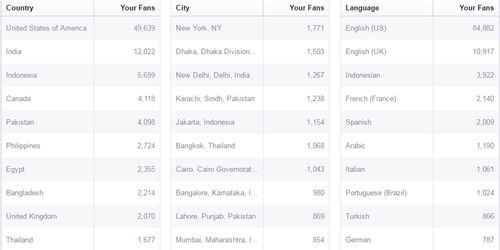Passport to Selling Internationally Online

There comes a time in every ecommerce company's life when it's time to talk about international sales.
Whether these discussions are driven by customer demand or the need for additional revenue, cross-border commerce shouldn't be a subject approached lightly considering the many variables at play. Let's address some of the key items that need to be checked off before selling internationally.
Identify Target Markets
There's no sense in taking all the steps to sell to a country where there just isn't demand. Before any decisions are made or actions are taken, site owners should identify target markets by looking at who is already actively engaged with the company, across channels. One way to spot which populations are going to a site is by reviewing audience location reports within a Web analytics system. Marketers can filter these reports by the metrics that indicate the greatest demand for their products including average session duration, number of total sessions, pages per sessions, etc.
Retail brands may be surprised by the findings. For instance, the United Kingdom could bring the most sessions outside the U.S., but Spain could have the highest time on site. For simplicity's sake (since the UK and the U.S. share a common first language), the marketer in this case may decide to only sell to the UK and U.S. Before deciding on adding additional countries, however, brands should look at other data sources as well.
As the number one social network in the world, Facebook can be used to evaluate international audiences and their interactions with U.S. companies. By going to Facebook>Insights>People, brands will get an overview of where fans live and the languages they speak (see image). Companies that haven't looked at this data in the past, or even recently, may be surprised yet again by the number of international fans they have and where they are located.

It should be noted, that some countries ban both Facebook and Google for various reasons and have their own popular social networks and search engines, so other data sources will be needed if selling to China, for instance, is a consideration.
From there, brands will need to research the tentatively chosen country's revenue potential, audience propensity toward international purchases and even local product laws.
Plan (Legal) Product Use
Once target markets have been selected, brands will need to consider how products will actually work in other countries. Will it need an adapter to charge? If so, will that be included in the price or added on as an upsell? Will it need to connect to Wi-Fi and will that be compatible elsewhere? Similarly, are there any local laws preventing this product from being used in the target market?
For instance, baby walkers are illegal in Canada (see image). Believing they cause developmental delays and injuries, the country banned them. Possession of a baby walker could lead to fines up to $100,000 or six months in jail. Who knew? Anyone selling baby walkers has to.

Investing in product law research in the beginning will save retailers plenty of time and money later.
Choose Shipping Partner(s)
About five years have passed since many of the larger retailers (Macy's, Crate & Barrel, eBay) started shipping overseas. Their globalization efforts established the groundwork for smaller merchants ready to expand.
Both FedEx and UPS provide international shipping solutions before (e.g., showing prices in local currency, displaying total landed costs so there are no cash-on-delivery surprises), during (e.g., custom compliance tools, export documentation) and after the shipment (e.g., fraud protection for sellers).
In addition to the shipping carriers themselves, there are countless solution providers working with them to improve efficiency and experience. Aptos (which acquired ShopVisible and is a spinoff of Epicor), for instance, integrates with Pitney Bowes to help retailers ship to 200 countries in much of the same way they would domestically.
With Pitney Bowes (a company offering information management, shipping, mailing and more), both consumers and retailers benefit. Shoppers not only experience a localized version of a retailer's global site, but they are also able to use their local currency. On the merchant side, fulfillment seems to be as easy.
Retailers ship their goods to Pitney Bowes (just like a domestic order) and then Pitney Bowes becomes the merchant of record, handling all payment processing and fraud management (preventing any bad debt or chargebacks).
Set Return Policies
Even with all the work that has gone into localizing a website for global audiences and shipping products around the world, customers may not be satisfied with their order. It's a mistake not to establish a returns protocol and process, according to Charles Dimov, marketing director of OrderDynamics, whose company provides an order management system that connects to different data sources, consolidates a retailer's information and inventory and provides a real-time routing solution.
When considering what to include in an international return policy, Dimov advises that retailers keep in mind that the order management and omnichannel retail experience can be more or less mature in certain international markets.
Dimov believes U.S. firms selling internationally will need to place focus on returns management in order to differentiate their retail offering against market incumbents in the future. Marks & Spencer customers in Europe, for instance, can "click and carry," access real-time inventory for the delivery option of their choice, return items via the most convenient method for them (e.g., in store, postal, InPost parcel lockers, etc.) and in many other ways enjoy a true omnichannel experience that some U.S. retailers have yet to offer.
Even M&S has strict international return guidelines, however. It prohibits returns in several categories like furniture, electrical, beauty and pillows.
More to Consider
The above checklist is certainly a good place to start when weighing the benefits and drawbacks of selling internationally online. With so many moving parts, however, there's a lot more to consider including payments (check out how people pay around the world), U.S. and international taxes, and customer support.

Subscribe to Our Newsletter!
Latest in Marketing








